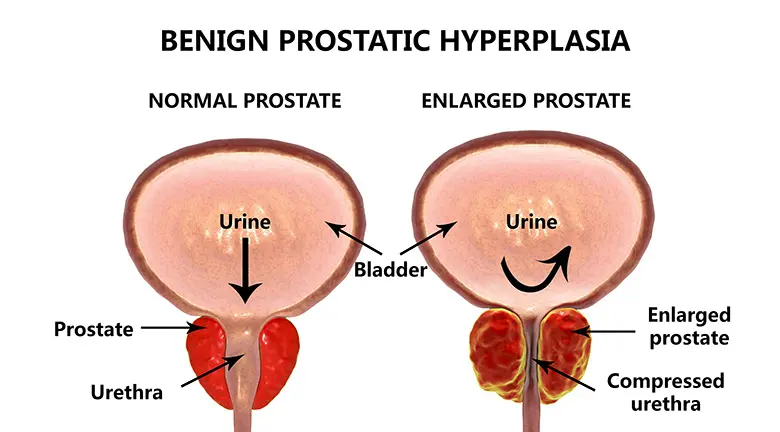Water Vapour Therapy
What is water vapour therapy?
Water vapour therapy is a minimally invasive treatment for benign prostate gland enlargement, also known as benign prostatic hyperplasia (BPH).
How water vapour therapy works
The treatment uses the stored thermal energy in water vapour (steam) to treat the excess prostate tissue and reduce the size of the prostate.
Water vapour therapy relieves BPH symptoms while preserving sexual function.
Most men see improvement in their symptoms within a few weeks and can return to regular activities within a few days after the treatment.
What is benign prostatic hyperplasia (BPH)?
BPH is an excess growth of prostate tissue resulting in an enlarged prostate gland. The excess prostate tissue compresses and obstructs the urethra. This reduces or blocks the flow of urine out of the bladder and causes bladder, urinary tract or kidney problems.
Symptoms of BPH include:
- Frequent or urgent need to urinate
- Increased frequency of urination at night
- Difficulty with urination
- Weak or irregular urine flow
- Inability to completely empty the bladder
There are several treatments available for BPH. This includes medications, minimally invasive treatment and surgery.
Your doctor will evaluate your condition and suggest the most appropriate treatment plan, depending on:
- Your age and symptoms
- The severity of the BPH
- The size of your prostate
- Other health conditions you might have
- Your preferences for treatment
Types of treatment for BPH
Medication is usually the first line of treatment for BPH if you have mild to moderate symptoms. If your symptoms are moderate to severe, minimally invasive or surgical treatment may be recommended.
The types of treatment include:
- Drug treatment, which includes 2 broad categories of medication:
- Drugs that relax the prostate to reduce the blockage of the bladder opening
- Drugs that block the production of the male hormone (DHT) which is involved in prostate enlargement
- Minimally invasive treatment such as water vapour therapy
- Surgery to remove the parts of the swollen prostate that are pressing against the urethra. The methods used include:
- Laser prostatectomy (laser vaporisation)
- Transurethral resection of the prostate (TURP)
- Transurethral incision of the prostate
- Open surgery is used when the prostate is too large
- Simply waiting and observing if symptoms are less severe
Why do you need water vapour therapy?
Your doctor may recommend water vapour therapy as a treatment for your BPH if you:
- Choose to discontinue or prefer not to take long-term medications for BPH
- Are dissatisfied with symptom relief using medication
- Want to avoid invasive surgery or implants
- Want a treatment with minimal risk of disturbance to sexual function
Discuss with your doctor if water vapour therapy is a good treatment option for you based on your symptoms, health and preferences.
What are the risks and complications of water vapour therapy?
Potential risks associated with water vapour therapy include:
- Painful or frequent urination
- Blood in the urine or semen
- Decrease in ejaculatory volume
- Urinary tract infection (UTI)
- Inability to urinate or completely empty the bladder
- Urgent need to urinate
- Inability to ejaculate
- Inflammation of the prostate gland
In rare cases, the following side effects may occur:
- Narrowing of the bladder neck (area of the bladder that connects to the urethra)
- Severe infection
Patients may experience continued or worsening BPH symptoms during the healing phase after the procedure. It may require the use of a catheter for a few days.
Do discuss the benefits and risks associated with water vapour therapy with your doctor.



